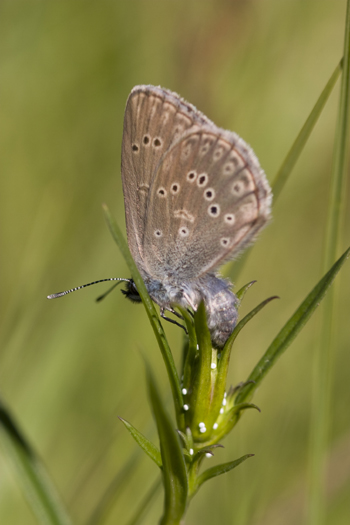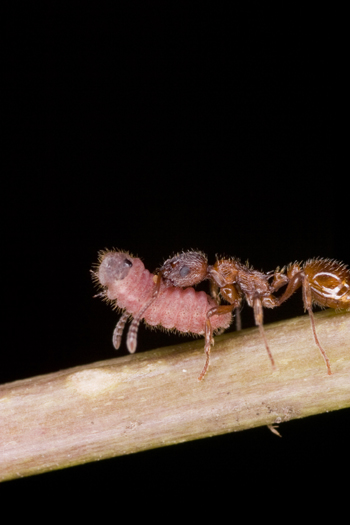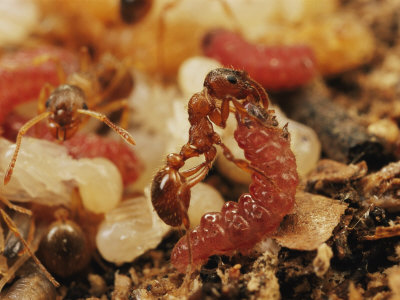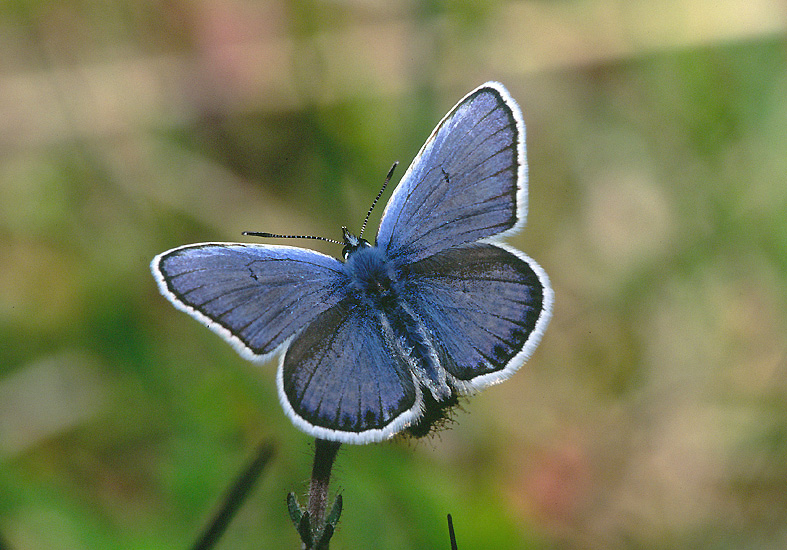Scoundrels – #4
The paussine beetles (see scoundrels – #6) are very good at mimicking the odour of ants in order to run amok in the nests of their hosts, gorging themselves on eggs, larvae and pupae. This is the sort of behaviour we’ve come to expect from ground beetles, the dark, scuttling creatures that they are. If someone suggested that a butterfly was capable of the same unpleasant behaviour, your initial course of action might be to take the cad by the lapels and rough him up a bit so that he repents for blackening the good name of such charming insects. Unfortunately, they would be right, so you’d have some apologising to do.
Anyway, butterflies are capable of behaving in some very despicable ways, especially the larvae. The adults are fleeting, shallow, lustful creatures, only interested in getting it on with the opposite sex, but the larvae have the difficult task of eating as much as possible in the shortest amount of time and to do this some species have found they can get the job done very successfully if they pull the wool over the beady eyes of ants.
The alcon blue butterfly (Maculinea alcon) is one such interloper and the story begins around the end of July in the European summer when the female alcon blues deposit their white eggs on the flowers of marsh gentian. A few days later the tiny caterpillars hatch out of the bottom of their egg and munch a tunnel straight into the closed flower of the gentian and here it remains for around two weeks, safe from its predators, eating some of the flower tissue and developing seeds, but not growing very much. In the flower, the caterpillar sheds its skin three times and after the final time it’s ready to take its leave of this safe house, so in the early morning or evening it chews its way from the base of the flower and shuffles along the petals to the apex of the bloom. Apparently tired of its nursery it releases its grip and falls to the ground on a silken thread and waits.

This is the riskiest time of its short life. Predators abound amongst the short turf and all of them would make short work of a tiny, plump caterpillar; however a small, foraging red ant (Myrmica spp.)gets a whiff of the caterpillar and goes for a closer look. The ant, seemingly intrigued and mesmerized by the caterpillar, strokes it all over with its quivering antennae. If it could, the caterpillar would be breathing a huge sigh of relief as this is exactly what it was waiting for. This is a result. To express its relief the ant produces a drop of sweet fluid from its rear end, which the ant immediately starts suckling. This can go on for some time, until the caterpillar flattens the middle or rear of its body, a simple act that is apparently enough to completely fool the ant that the caterpillar is a grub from its own nest that has somehow gone walkabout. It tenderly picks the caterpillar up in its jaws and makes for the nest.

The caterpillar is deposited in the nursery of the ant’s nest alongside the countless young of the colony. Here, it blends right in. It smells right and smell to ants is all important. The ants feed the caterpillar by regurgitating nutritious fluid and somehow these tiny tricksters persuade the ants to give them preferential treatment so that they receive more attention and food than the ant grubs. To add insult to injury, the caterpillars also supplement their liquid diet by scoffing the odd ant grub or two. On such a nutritious diet the caterpillar grows quickly, increasing its weight by amount 100 times during its first month in the nest. The caterpillar stays put in the nest for some time, living it up in the safety of the nest at the expense of the trusting ants and only when the following summer arrives does it begin the transformation that will turn it into a fine butterfly.

When it emerges from its chrysalis as an adult butterfly deep underground the tricks used to deceive the ants have long since worn away. It no longer smells like an ant and it certainly doesn’t look like an ant larva, albeit a massive one. At this point, the ants are probably beginning to twig: “Wait a minute… is that the fat sister we’ve been feeding for ages…isn’t she a looker?…must have got her dad’s genes.” “Saying that though she does look a lot like those weird fluttery things we see on the outside……..but what’s it doing in here?” As the penny drops it’s time for the butterfly to leg it. The ants see the butterfly they have nurtured for the best part of a year as nothing more than an intruder and if they get hold of the low-down mimic they’ll do unspeakable things to it. Fortunately, the butterfly has one last trick to avoid being held to account and as the angry ants try and bite the fleeing charlatan all they come away with is a mouthful of scales. The whole body of the newly emerged butterfly is densely covered in loose scales and the ants cannot get a grip on it, so by the scales on its behind it manages to give its trusting guardians the slip and leaves the nest by the nearest exit without so much as a bye or leave. Above ground it makes for a perch among the lofty vegetation of the meadow where its wings will inflate and harden in the summer sun until it is ready to flutter off like butter wouldn’t melt on its proboscis.

For the sheer audacity of these butterflies they’re at number four in the scoundrel chart.
Leave a Reply